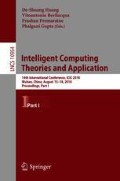Abstract
Aptamers are single-stranded DNA or RNA sequences that tightly bind to a specific target molecule. This paper presents a computational method for generating potential protein-binding RNA aptamers using a random forest based on several features of protein and RNA sequences and RNA secondary structures. The results of cross validation and independent testing showed that our method can significantly reduce the initial pool of RNA sequences and that the top 10 candidates of RNA aptamers have similar secondary structures and protein-binding structures as actual RNA aptamers for a protein target. Although preliminary, our approach will be useful for constructing an initial pool of RNA sequences for experimental selection of aptamers.
Access this chapter
Tax calculation will be finalised at checkout
Purchases are for personal use only
References
Tuerk, C., Gold, L.: Systematic evolution of ligands by exponential enrichment: RNA ligands to bacteriophage T4 DNA polymerase. Science 249(4968), 505–510 (1990)
Osborne, S.E., Ellington, A.D.: Nucleic acid selection and the challenge of combinatorial chemistry. Chem. Rev. 97(2), 349–370 (1997)
Chushak, Y., Stone, M.O.: In silico selection of RNA aptamers. Nucleic Acids Res. 37(12), e87 (2009)
Li, B.Q., Zhang, Y.C., Huang, G.H., Cui, W.R., Zhang, N., Cai, Y.D.: Prediction of aptamer-target interacting pairs with pseudo-amino acid composition. PLoS ONE 9(1), e86729 (2014)
Zhang, L., Zhang, C., Gao, R., Yang, R., Song, Q.: Prediction of aptamer-protein interacting pairs using an ensemble classifier in combination with various protein sequence attributes. BMC Bioinformatics 17, 225 (2016)
Hu, W.P., Kumar, J.V., Huang, C.J., Chen, W.Y.: Computational selection of RNA aptamer against angiopoietin-2 and experimental evaluation. Biomed. Res. Int. 2015, 658712 (2015)
Shcherbinin, D.S., Gnedenko, O.V., Khmeleva, S.A., Usanov, S.A., Gilep, A.A., Yantsevich, A.V., Shkel, T.V., Yushkevich, I.V., Radko, S.P., Ivanov, A.S., Veselovsky, A.V., Archakov, A.I.: Computer-aided design of aptamers for cytochrome p450. J. Struct. Biol. 191(2), 112–119 (2015)
Ahirwar, R., Nahar, S., Aggarwal, S., Ramachandran, S., Maiti, S., Nahar, P.: In silico selection of an aptamer to estrogen receptor alpha using computational docking employing estrogen response elements as aptamer-alike molecules. Sci. Rep. 6, 21285 (2016)
Rabal, O., Pastor, F., Villanueva, H., Soldevilla, M.M., Hervas-Stubbs, S., Oyarzabal, J.: In silico aptamer docking studies: from a retrospective validation to a prospective case study-TIM3 aptamers binding. Mol. Therapy-Nucleic Acids 5, e376 (2016)
Cruz-Toledo, J., McKeague, M., Zhang, X., Giamberardino, A., McConnell, E., Francis, T., DeRosa, M.C., Dumontier, M.: Aptamer base: a collaborative knowledge base to describe aptamers and SELEX experiments. Database (Oxford) (2012)
Choi, S., Han, K.: Prediction of RNA-binding amino acids from protein and RNA sequences. BMC Bioinformatics 12(Suppl. 13), S7 (2011)
Choi, S., Han, K.: Predicting protein-binding RNA nucleotides using the feature-based removal of data redundancy and the interaction propensity of nucleotide triplets. Comput. Biol. Med. 43(11), 1687–1697 (2013)
Tuvshinjargal, N., Lee, W., Park, B., Han, K.: Predicting protein-binding RNA nucleotides with consideration of binding partners. Comput. Methods Programs Biomed. 120(1), 3–15 (2015)
Chen, W., Feng, P.M., Deng, E.Z., Lin, H., Chou, K.C.: iTIS-PseTNC: a sequence-based predictor for identifying translation initiation site in human genes using pseudo trinucleotide composition. Anal. Biochem. 462, 76–83 (2014)
Dubchak, I., Muchnik, I., Holbrook, S.R., Kim, S.H.: Prediction of protein folding class using global description of amino acid sequence. Proc. Natl. Acad. Sci. U.S.A. 92(19), 8700–8704 (1995)
Shen, H.B., Chou, K.C.: PseAAC: a flexible web server for generating various kinds of protein pseudo amino acid composition. Anal. Biochem. 373(2), 386–388 (2008)
Ruckman, J., Green, L.S., Beeson, J., Waugh, S., Gillette, W.L., Henninger, D.D., Claesson-Welsh, L., Janjic, N.: 2′-fluoropyrimidine rna-based aptamers to the 165-amino acid form of vascular endothelial growth factor (VEGF165). Inhibition of receptor binding and vegf-induced vascular permeability through interactions requiring the exon 7-encoded domain. J. Biol. Chem. 273, 20556–20567 (1998)
Tasset, D.M., Kubik, M.F., Steiner, W.: Oligonucleotide inhibitors of human thrombin that bind distinct epitopes. J. Mol. Biol. 272, 688–698 (1997)
Lorenz, R., Bernhart, S.H., Zu Siederdissen, C.H., Tafer, H., Flamm, C., Stadler, P.F., Hofacker, I.L.: ViennaRNA Package 2.0. Algorithms Mol. Biol. 6(1), 26 (2011)
Yan, Y., Zhang, D., Zhou, P., Li, B., Huang, S.Y.: HDOCK: a web server for protein-protein and protein-DNA/RNA docking based on a hybrid strategy. Nucleic Acids Res. 45(W1), W365–W373 (2017)
Popenda, M., Szachniuk, M., Antczak, M., Purzycka, K.J., Lukasiak, P., Bartol, N., Blazewicz, J., Adamiak, R.W.: Automated 3D structure composition for large RNAs. Nucleic Acids Res. 40(14), e112 (2012)
Acknowledgments
This work was supported by the National Research Foundation of Korea (NRF) grants (2015R1A1A3A04001243, 2017R1E1A1A03069921) funded by the Ministry of Science and ICT.
Author information
Authors and Affiliations
Corresponding author
Editor information
Editors and Affiliations
Rights and permissions
Copyright information
© 2018 Springer International Publishing AG, part of Springer Nature
About this paper
Cite this paper
Lee, W., Lee, J., Han, K. (2018). Finding Potential RNA Aptamers for a Protein Target Using Sequence and Structure Features. In: Huang, DS., Bevilacqua, V., Premaratne, P., Gupta, P. (eds) Intelligent Computing Theories and Application. ICIC 2018. Lecture Notes in Computer Science(), vol 10954. Springer, Cham. https://doi.org/10.1007/978-3-319-95930-6_89
Download citation
DOI: https://doi.org/10.1007/978-3-319-95930-6_89
Published:
Publisher Name: Springer, Cham
Print ISBN: 978-3-319-95929-0
Online ISBN: 978-3-319-95930-6
eBook Packages: Computer ScienceComputer Science (R0)

